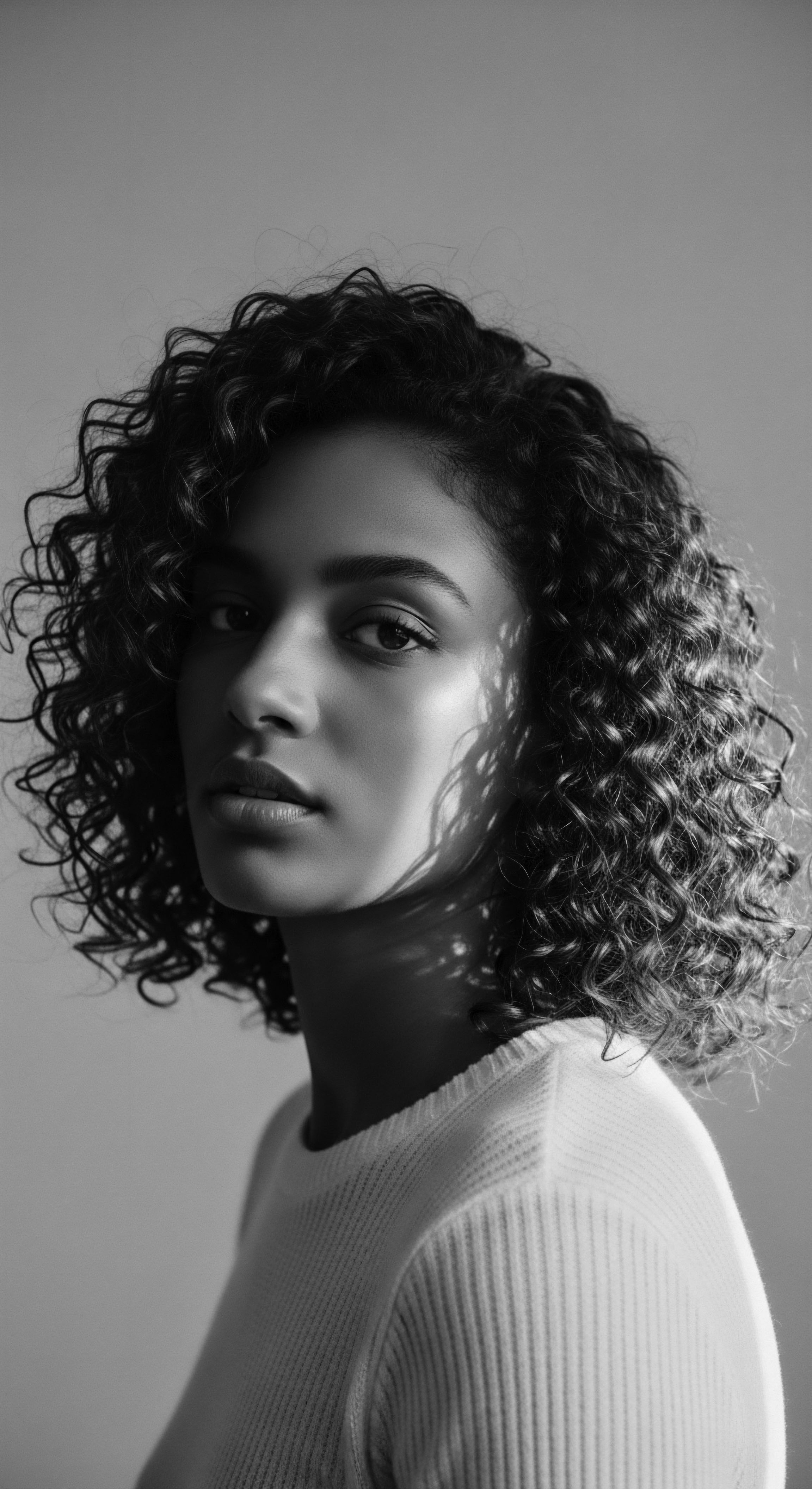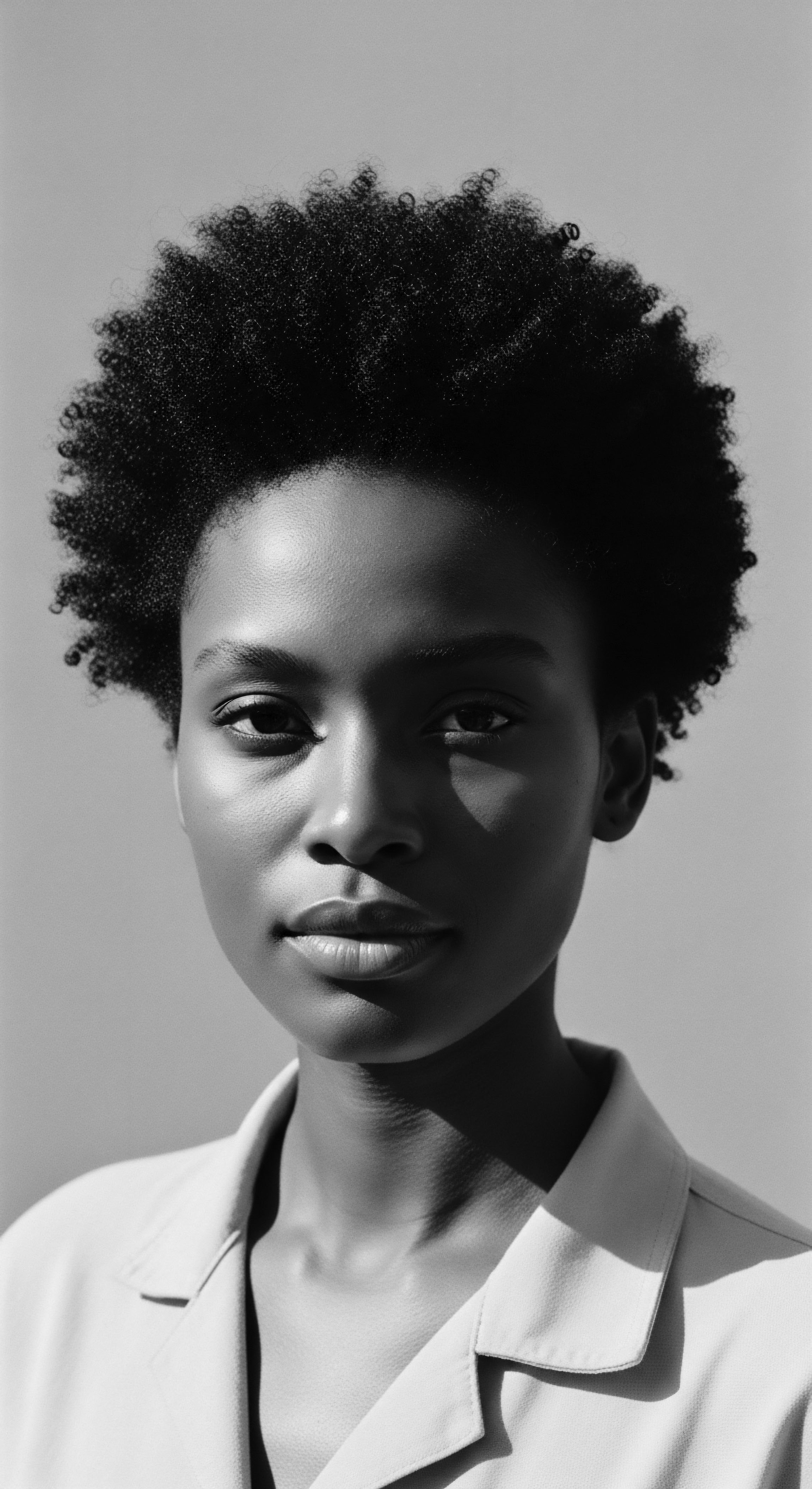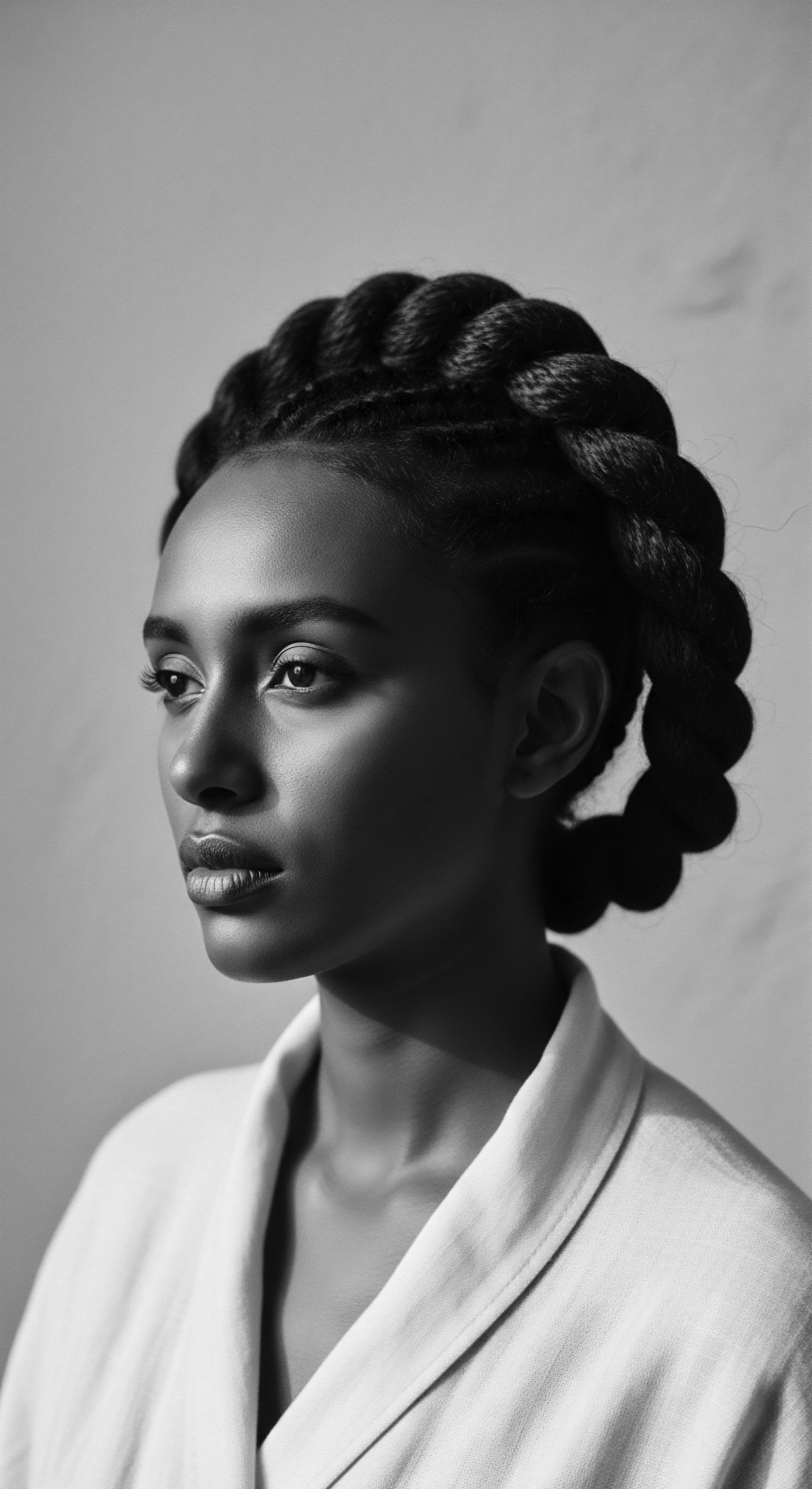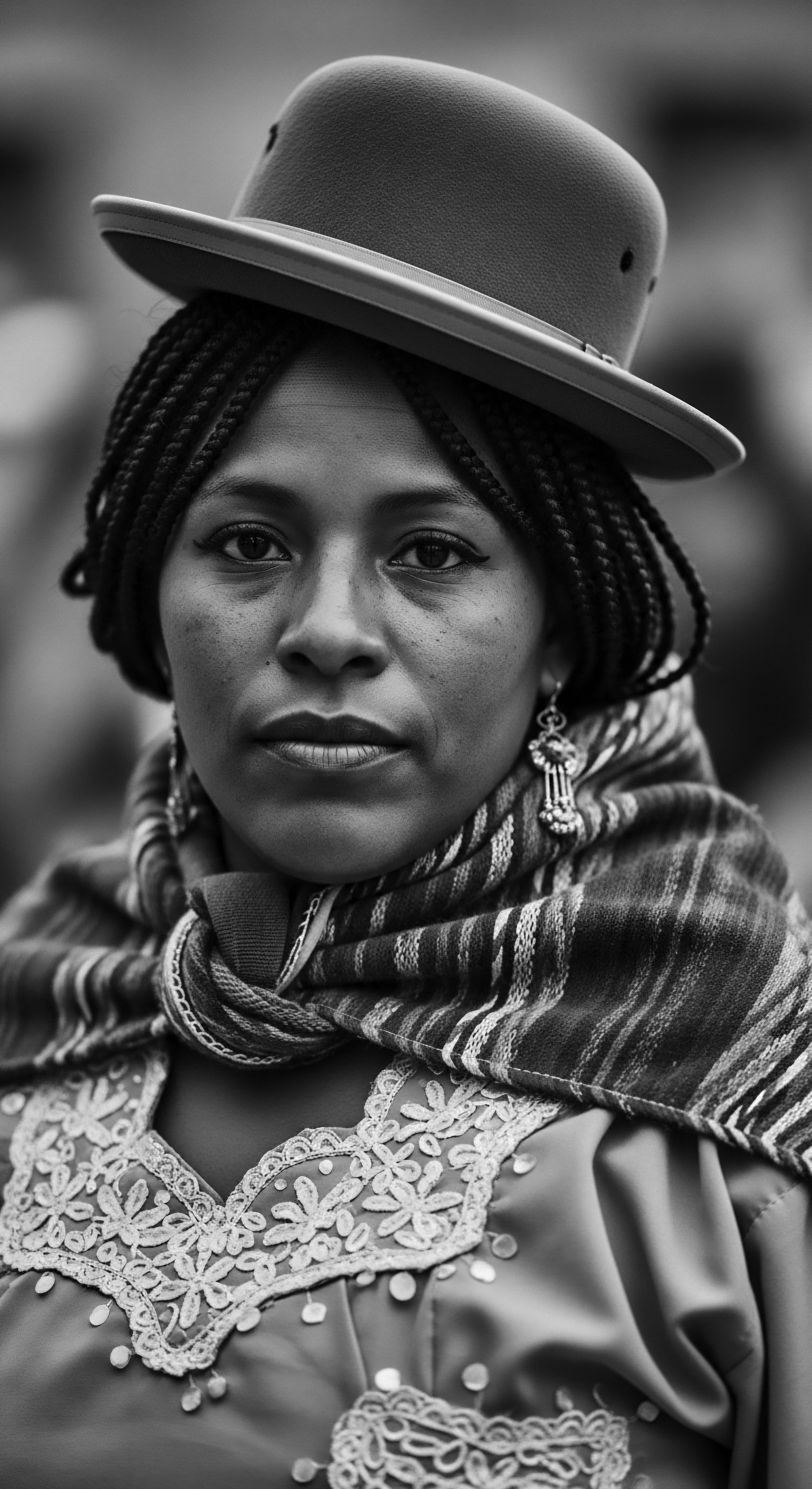
Roots
Our strands hold whispers of epochs, a lineage tracing back to the very origins of humanity. Consider, for a moment, the hair that crowns you, or the coiled spirals that sprung forth from ancestors on ancient soil. It is more than mere protein; it is a living archive, a scroll upon which stories of perseverance, identity, and profound cultural wisdom have been inscribed.
To ask how textured hair care has shifted through heritage is to embark upon a sacred inquiry, a soulful exploration of human ingenuity, resilience, and the intimate bond between self and ancestry. This is a quiet invitation to listen to the silent symphony of each coil, each kink, each wave, as it speaks of a journey spanning millennia.

Ancestral Understanding of Hair’s Biology
Before modern microscopy and advanced chemical compounds, our forebears possessed a deep, intuitive grasp of textured hair’s fundamental nature. Their observations, refined through generations, recognized the unique helical structure of these strands, recognizing its innate strength alongside its delicate disposition. The biological particularities of melanin-rich hair , with its characteristic curl patterns and inherent porosity, were not abstract scientific concepts. Instead, they were deeply understood through sensory experience ❉ the way certain plant oils absorbed, how particular clays cleansed, or the manner in which various braiding techniques preserved length and vitality.
This ancestral wisdom laid the groundwork for care practices that aligned with hair’s natural inclinations, long before the terms “cortex” or “cuticle” entered the lexicon of formal science. The rich, varied spectrum of curl types, from broadly undulating waves to tightly wound coils, was seen not as a deviation, but as a testament to the diversity of the human family, each type requiring a specific, cherished ritual of attention.
Textured hair, beyond its biology, stands as a living testament to ancestral wisdom regarding its unique structure and inherent needs.

Naming the Coils ❉ Beyond Eurocentric Frameworks
The vocabulary surrounding textured hair classification has, for too long, been shaped by external gazes. Yet, within indigenous African and diasporic communities, there existed organic systems for describing hair’s appearance and behavior. These traditional descriptions often spoke to attributes beyond simple curl diameter, referencing qualities such as sheen, softness, responsiveness to moisture, or even the spiritual resonance a particular style held. The contemporary numerical and alphabetical grading systems, while attempting to standardize, can sometimes overshadow the deeper, more holistic understanding that traditional societies held.
For example, in many West African cultures, hair was categorized by its propensity for certain styles or its ability to retain specific traditional treatments, reflecting a practical and cultural understanding over a purely visual one. The communal language of hair, shared between generations, often carried nuanced meanings that celebrated the hair’s inherent qualities, rather than comparing them to a different, dominant standard.

What Did Early Civilizations Use for Hair Care?
Ancient civilizations, particularly across the African continent, crafted sophisticated hair care practices using what the earth provided. The earliest forms of textured hair care were intrinsically tied to the local environment and its bounty. Think of the use of red ochre in parts of Southern Africa, mixed with animal fats, not only as a protective sealant against the sun but also as a cosmetic enhancing tint.
Or consider the application of shea butter across West Africa, derived from the karite tree, offering unparalleled moisture and a protective barrier against harsh elements. These were not random applications; they were the result of empirical observation and communal knowledge passed down through the ages.
The understanding of hair’s needs was deeply contextual. Climates dictated certain practices ❉ arid regions favored heavier, occlusive substances to lock in moisture, while more humid environments might prioritize cleansing clays and lighter conditioning agents. The development of early hair implements also bears witness to this ingenuity.
- Combs ❉ Hand-carved from wood or bone, these were designed to navigate intricate curl patterns without causing undue breakage, often serving symbolic and artistic purposes beyond utility.
- Hairpins ❉ Made from metal, wood, or ivory, used for securing elaborate styles and often signifying social status or marital availability.
- Aromatic Plants ❉ Herbs and flowers, infused into water or oils, provided natural fragrance and possessed medicinal properties for scalp health.

The Unseen Forces Influencing Early Hair Health
Hair growth cycles, though unseen, were certainly observed in their effects. The periods of flourishing and dormancy, of shedding and regrowth, informed the seasonal rhythms of care. Dietary influences, too, played an undeniable role, as healthy hair was understood as a visible sign of internal wellbeing. Ancestral diets rich in locally sourced fruits, vegetables, and proteins provided the foundational nutrients for vibrant hair.
Beyond sustenance, factors like environmental conditions and even social structures held sway. A community experiencing peace and abundance might have more leisure for elaborate styling, while times of scarcity or strife could lead to more utilitarian, protective approaches. The very fabric of community life often dictated how hair was tended, with communal grooming sessions serving as vital conduits for knowledge exchange and social bonding. These were early holistic approaches, long before the term was coined, where the health of the individual, the community, and their hair were intrinsically bound.

Ritual
The passage of heritage through the tending of textured hair did not cease with the ancient world; it transitioned, adapted, and deepened, particularly as diasporic communities arose. The methods, tools, and transformative power of textured hair styling are not merely technical processes; they are living testaments to cultural continuity and innovation, each braid, twist, or press carrying the weight of generations.

Protective Styles ❉ An Ancestral Legacy
The conceptual framework of protective styling, so prevalent in contemporary textured hair care, finds its deepest roots in ancestral practices. For millennia, various African societies perfected techniques to safeguard hair from environmental stressors, manage its length, and signify intricate social meanings. Styles such as Cornrows, documented as far back as 3000 BCE in Egyptian artifacts, served practical purposes of hygiene and preservation, while also communicating societal roles, marital status, or tribal affiliation.
Similarly, Braids and Twists, often adorned with cowrie shells, beads, or gold, were not simply decorative; they provided a shield, minimizing manipulation and breakage, allowing hair to retain its vitality over extended periods. This dual purpose—function and cultural expression—is a hallmark of textured hair heritage.

How Did Styling Practices Survive Forced Migration?
The transatlantic slave trade, a period of immense rupture, sought to strip enslaved Africans of their identity, often beginning with the shaving of heads upon capture. Yet, the resilient spirit of hair care rituals, though violently suppressed, found ways to persist. In the harsh conditions of enslavement, where traditional tools and ingredients were scarce, ingenuity prevailed. Enslaved individuals would fashion makeshift combs from fish bones or wood, and utilize readily available substances like animal fats, butter, or even axle grease as improvised conditioners to manage their hair.
These practices, though born of necessity, ensured the survival of a fundamental connection to self and community. The communal grooming sessions on Sundays, often the sole day of respite, became clandestine spaces where braiding techniques were shared, oral histories exchanged, and a sense of collective identity maintained (Collins in Library of Congress, 2020). These gatherings became vital sites of cultural resistance, preserving a heritage through touch and shared wisdom, transmitting knowledge from mother to daughter, elder to child.

From Hot Combs to Defined Curls
The evolution of styling tools for textured hair presents a journey from elemental heating to sophisticated definition. The hot comb , for example, which gained prominence in the late 19th and early 20th centuries, represented a complex duality. On one hand, it offered a means of straightening hair, aligning with Eurocentric beauty standards that became pervasive during and after slavery.
On the other hand, its application by Black women entrepreneurs like Madam C.J. Walker and Annie Turnbo Malone allowed for economic independence and the creation of a thriving, self-sufficient beauty industry within Black communities, This tool, though sometimes associated with damage if misused, provided a level of styling versatility previously unattainable for many.
Today, natural styling techniques prioritize the inherent curl pattern. Products formulated for definition, moisture, and hold enable wearers to celebrate their coils and kinks without altering their structure. This movement, gaining significant momentum in the late 20th and 21st centuries, is a direct reclamation of heritage, a conscious decision to honor the unadulterated beauty of textured hair. It signals a powerful return to ancestral ideals of self-acceptance and pride.
| Historical Practice Hair Threading (Yoruba, Nigeria, 15th Century) |
| Primary Objective Length retention, stretching, protective styling, social communication. |
| Modern Parallel/Evolution Curl elongation techniques, low-manipulation styles, natural hair stretching methods. |
| Historical Practice Greasing with Natural Butters/Oils (Ancient Africa) |
| Primary Objective Moisture retention, scalp health, sheen, protection from elements. |
| Modern Parallel/Evolution Deep conditioning treatments, pre-poo oil applications, leave-in conditioners. |
| Historical Practice Communal Braiding Rituals (Enslavement Era) |
| Primary Objective Hair management, cultural preservation, community bonding, covert communication. |
| Modern Parallel/Evolution Styling circles, natural hair meetups, salon as a community hub. |
| Historical Practice These comparisons illuminate how enduring heritage practices have adapted and found new expression in contemporary textured hair care. |

The Complete Textured Hair Toolkit ❉ Old and New
The tools accompanying textured hair care have also evolved, yet many modern implements echo ancient forms. The wide-tooth comb, so crucial for detangling coiled hair, mirrors the careful craftsmanship of early bone and wooden combs designed to gently separate strands. Satin scarves and bonnets, essential for nighttime protection today, carry forward the tradition of head wraps and ceremonial coverings that served both practical and symbolic roles across African societies.
While chemical relaxers and sophisticated heat tools introduced periods of dramatic alteration, the foundational principles of care—gentle detangling, moisture application, and protective styling—remain constant. The toolkit of the textured hair journey is thus a testament to continuous adaptation, a blend of time-honored wisdom and innovative solutions, each contributing to the holistic wellbeing of the hair.

Relay
To consider how textured hair care has evolved with heritage is to look beyond mere aesthetics; it is to witness a profound dialogue between ancestral wisdom and the dynamic forces of modern understanding. This relay of knowledge, spanning continents and centuries, speaks to the hair’s role as a vibrant conduit of identity, a site of continuous reclamation and scientific validation.

Regimens Rooted in Ancestry ❉ A Holistic View
The structure of a robust textured hair care regimen, even today, often mirrors the holistic approach of our ancestors. Their understanding of health was interconnected ❉ body, spirit, and environment were seen as one continuum. This meant hair care was never divorced from overall wellbeing. Traditional practices incorporated rituals that nourished not only the hair itself but also the scalp, recognizing it as the foundation of healthy growth.
Ingredients drawn directly from nature – plant oils, butters, clays, and herbal infusions – were selected for their specific properties, learned through generations of observation and application. For example, the use of Chebe powder by the Bassara women of Chad is a powerful testament to this deep knowledge. This powder, prepared from the seeds of the Croton gratissimus plant, is mixed with oils and applied to the hair to aid in length retention and strength, a practice passed down through their lineage. This ancestral wisdom, validated by modern scientific appreciation for botanical properties, underpins the contemporary emphasis on gentle cleansing, deep conditioning, and regular moisturizing.

What Ancient Practices Inform Modern Hair Care?
Many modern hair care concepts have clear antecedents in ancient traditions. Consider the widespread practice of “co-washing” (conditioner-only washing) today. This echoes ancestral methods that prioritized gentle cleansing and moisture retention over harsh stripping.
- Oil Rinses ❉ Pre-dating shampoo, many African societies utilized various oils (e.g. palm, shea) to cleanse and condition the hair, often followed by water rinsing, a direct predecessor to contemporary pre-poo treatments.
- Herbal Infusions ❉ Plants with cleansing or conditioning properties were steeped in water to create rinses, offering mild purification and scalp stimulation, much like modern herbal hair teas.
- Scalp Massages ❉ Integral to many traditional routines, these were performed with natural oils to stimulate blood flow and support healthy hair growth, a practice now championed by trichologists for its benefits to follicular health.
These practices speak to an enduring principle ❉ respecting the hair’s natural moisture balance and relying on ingredients compatible with its unique structure. The evolution of care, from elemental concoctions to sophisticated formulations, often builds upon these timeless principles.
The enduring legacy of textured hair care finds its clearest voice in how communities have steadfastly adapted ancestral practices, ensuring both physical and spiritual continuity.

Nighttime Sanctum ❉ The Bonnet’s Historical Echo
The ritual of nighttime protection, particularly the use of head coverings, is deeply embedded in textured hair heritage. The modern satin bonnet is more than a sleep accessory; it is a direct descendant of historical head wraps and scarfs worn across African and diasporic cultures. These coverings protected elaborate hairstyles, preserved moisture, and were often symbols of modesty, marital status, or spiritual observance. In many African societies, hair, being the highest point of the body, was seen as a spiritual antenna, requiring protection and respectful covering.
During enslavement and its aftermath, head wraps became multifaceted symbols ❉ a means of compliance under restrictive laws, a display of creativity and identity, and a practical method to safeguard hair from damage during arduous labor or sleep. The choice to cover one’s hair at night thus carries a profound historical weight, extending beyond mere practicality into the realm of ancestral reverence and self-preservation.

Solving Hair’s Challenges with Inherited Wisdom
Addressing common textured hair issues, from dryness to breakage, has always involved a blend of practical knowledge and inherited wisdom. Historically, if hair seemed brittle, elders might recommend specific plant-based conditioners or diet adjustments. If the scalp was dry or irritated, certain soothing herbs or oils would be applied. Modern hair science, with its analytical tools, often validates these traditional approaches.
For example, the molecular structure of shea butter (Butyrospermum parkii), long a staple in African hair care, has been studied for its rich fatty acid profile, demonstrating its exceptional emollient and occlusive properties for sealing moisture into the hair shaft. Similarly, the protein-rich qualities of certain ancestral ingredients, perhaps from plant extracts or fermented grains, would have been intuitively understood for their strengthening effects. The problems textured hair faces—its propensity for dryness due to the lifted cuticle, its susceptibility to breakage at the curves of the strand—are universal to its structure. The evolution of care has been a continuous process of refining solutions, whether through ancient herbal knowledge or modern cosmetic chemistry, always seeking to support the hair’s intrinsic needs.
A powerful historical instance of hair as a tool for survival and communication comes from the period of the transatlantic slave trade. During this horrific time, enslaved African women would intricately braid rice grains and seeds into their hair before being forcibly transported, preserving vital food sources and elements of their agricultural heritage. Furthermore, some sources recount enslaved people creating intricate braid patterns that served as maps to freedom, guiding escapees through hidden routes and safe houses, with the number of braids or their specific placement indicating directions or meeting points (Byrd & Tharps, 2014, p.
10). This speaks volumes about the hair as a repository of knowledge, a covert means of resistance, and a lifeline to freedom, an unparalleled act of heritage preservation under duress.

The Holistic Influence ❉ Beyond Products
Ancestral wellness philosophies held that external beauty mirrored internal balance. This perspective views hair health as a holistic outcome, influenced by more than just topical applications. Stress, nutrition, and even spiritual harmony were considered vital for robust hair.
This deep-seated understanding is mirrored in the contemporary wellness movement, which acknowledges the profound connection between diet, mental health, and hair vitality. The continuity of this belief underscores that the evolution of textured hair care is not merely a story of products and styles, but a testament to the enduring understanding that our hair, in its deepest sense, is a reflection of our entire being—a vibrant extension of our heritage and lived experience.

Reflection
The journey of textured hair care through heritage is a profound meditation, not a simple timeline. It is a testament to the persistent spirit of human connection, ingenuity, and self-definition. From the rhythmic communal hands tending coils in ancient villages to the quiet moments of self-care in contemporary homes, the heart of this care remains.
It is a living, breathing archive, each strand a meticulously preserved record of tradition, innovation, and unwavering spirit. Our textured hair, whether broadly waved, tightly coiled, or somewhere in between, stands as a vibrant connection to a deep and layered past, a constant reminder of the endurance of identity through trials and triumphs.
Roothea’s ‘Soul of a Strand’ ethos finds its purest expression in this ongoing story. It reminds us that understanding the biology of hair is inseparable from understanding its cultural weight, that a truly holistic regimen acknowledges the ancestral practices that shaped our approach to care. This deep-rooted understanding invites us to approach our hair not as a challenge to be conquered, but as a cherished inheritance to be honored.
The continuous adaptation of care practices, the reclamation of natural textures, and the renewed reverence for ancestral methods speak to a beautiful truth ❉ textured hair is a powerful symbol of continuous lineage, a canvas for self-expression, and a steadfast link to the collective wisdom of those who came before us. This is a heritage not merely preserved in history books, but vibrantly alive, growing, and evolving with every thoughtful touch and every conscious choice.
Textured hair care’s evolution signifies a continuous, vibrant conversation between ancient wisdom and contemporary understanding, rooted deeply in heritage.

References
- Byrd, Ayana D. and Lori L. Tharps. Hair Story ❉ Untangling the Roots of Black Hair in America. St. Martin’s Press, 2014.
- Dabiri, Emma. Twisted ❉ The Tangled History of Black Hair Culture. Harper Perennial, 2020.
- Ellington, Tameka, and Joseph L. Underwood. Textures ❉ The History and Art of Black Hair. Hirmer Verlag GmbH, 2020.
- Jacobs, Lanita. From the Kitchen to the Parlor ❉ Language and Becoming in African American Women’s Hair Care. Oxford University Press, 2011.
- Davis-Sivasothy, Audrey. The Science of Black Hair ❉ A Comprehensive Guide to Textured Hair Care. Saja Publishing Company, 2011.
- Akanmori, Harriet. “Hairstyles, Traditional African.” The SAGE Encyclopedia of African Cultural Heritage in North America. SAGE Publications, Inc. 2015.
- Wong, Nikita, et al. “Historical Perspectives on Hair Care and Common Styling Practices in Black Women.” Journal of Drugs in Dermatology, vol. 24, no. 3, 2025, pp. 265-270.
- Weitz, Rose. Rapunzel’s Daughters ❉ What Women’s Hair Tells Us about Women’s Lives. Farrar, Straus and Giroux, 2004.
